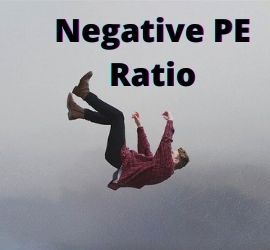What Is Tax Planning?
 Tax planning refers to financial planning aimed at reducing tax liabilities and optimally utilizing tax exemptions, rebates, and tax benefits to the full extent allowed by law. Tax-efficient investing requires the review of one’s financial situation from a tax perspective. The objective is to ensure that all elements work together to pay the least amount of taxes possible. Ultimately, a tax-efficient plan is one that reduces the amount of money a taxpayer owes in taxes. Individual investors should include tax preparation as part of their financial plans. Reducing tax liability and increasing one’s ability to contribute to retirement plans are critical success factors.
Tax planning refers to financial planning aimed at reducing tax liabilities and optimally utilizing tax exemptions, rebates, and tax benefits to the full extent allowed by law. Tax-efficient investing requires the review of one’s financial situation from a tax perspective. The objective is to ensure that all elements work together to pay the least amount of taxes possible. Ultimately, a tax-efficient plan is one that reduces the amount of money a taxpayer owes in taxes. Individual investors should include tax preparation as part of their financial plans. Reducing tax liability and increasing one’s ability to contribute to retirement plans are critical success factors.
Tax planning comprises various considerations. For example, the timing and size of income, purchases, and expenditures. However, proper tax planning diminishes tax liability by arranging financial events according to tax implications. Moreover, conforming these decisions to the provisions under taxation laws minimizes any potential legal complications. One of the biggest benefits of tax planning is that the returns can be directed to investments. This is an extremely productive way to make smart investments while fully utilizing the tax benefits, rebates, and exemptions.
Tax Planning – A Closer Look
The less tax you pay, the more money you have to put toward your financial goals. Tax planning is an important component of financial planning. This is because it may help you take advantage of tax-advantaged savings opportunities and tax breaks. Also, manage your income and withdrawals to minimize tax effects.
The difference between tax deductions and tax credits
Tax deductions and credits may be the most profitable aspect of completing your tax return. Both lower your tax liability, but in very different ways. Knowing the difference can help you devise extremely effective tax methods to lower your tax burden.
- Tax deductions are specific expenses you’ve incurred that you can subtract from your taxable income. They reduce how much of your income is subject to taxes. In other words, a tax deduction is a provision that lowers the amount of taxable income. A standard deduction is a single, fixed-amount deduction. Itemized deductions are popular with higher-income taxpayers because they frequently have considerable deductible expenses, such as state/local taxes paid, mortgage interest, and charitable contributions.
- Tax credits are even better because they reduce your tax payment dollar for dollar. A $1,000 tax credit, for example, reduces your tax burden by $1,000. Not only is a tax credit a one-for-one reduction in your tax burden, but some credits are also even refundable. For example, if you owe $250 in taxes but qualify for a $1,000 credit, you’ll receive a check for $750. However, most tax credits are not refundable.
Tax Planning and Retirement
Saving through a retirement plan is a common approach to lower taxes. Contributing to a traditional IRA reduces gross income by the amount contributed. If all conditions are met, a filer under the age of 50 can contribute up to $6,000 to their IRA in 2022. For example, if a 40-year-old male with a $50,000 yearly salary makes a $6,000 contribution to a typical IRA, his adjusted gross income is $44,000, and the $6,000 investment grows tax-free until retirement.
There are various alternative retirement options available to help lower tax liability. 401(k) programs are popular among large corporations with many employees. Participants in the plan can transfer their earnings from their paychecks into the company’s 401(k) plan. The most significant distinction is that the contribution limit cash amount is substantially higher than that of an IRA. The maximum amount that an individual or employer can contribute to a 401(k) plan is adjusted on a regular basis to account for inflation, Employee contributions are limited to $20,500 per year for individuals under the age of 50 in 2022.
Tax Planning via Gain-Loss Harvesting
Tax gain-loss harvesting is another type of investment tax planning or management. It is useful because it can leverage the losses in a portfolio to offset total capital gains. Short and long-term capital losses, according to the IRS, must first be used to offset capital gains of the same sort. In other words, long-term losses offset long-term gains before short-term benefits offset long-term losses. Earnings from assets owned for less than a year are taxed at ordinary income rates. In 2022, long-term capital gain limits have been increased
- 0% for taxpayers whose income is less than $40,400 ($80,800 in the case of a joint return or widow(er),
- 15% tax for taxpayers whose income is more than $40,400 but less than $445,850 for single. More than $80,800 but less than or equal to $501,600 for married filing jointly or qualifying widow(er). More than $54,100 but less than or equal to $473,750 for the head of household or more than $40,400 but less than or equal to $250,800 for married filing separately.
- 20% applies to the extent that your taxable income exceeds the thresholds set for the 15% capital gain rate. (Source: irs.gov)
Capital Gains and Losses
A capital asset is almost anything you possess and employ for personal or investment purposes. A home, personal-use assets such as domestic furnishings, and stocks or bonds kept as investments are all examples. When you sell a capital asset, the difference between the asset’s adjusted basis and the amount realized from the sale is a capital gain or loss. In general, the basis of an item is its cost to the owner. However, if you acquired the asset as a gift or inheritance, there may be other procedures to follow. If you sell an asset for more than its adjusted basis, you earn a capital gain. If you sell the asset for less than its adjusted basis, you incur a capital loss. Personal-use property losses, such as the sale of your home or automobile, are not tax-deductible.
Almost everything you own and use for personal or investment purposes is a capital asset. Examples include a home, personal-use items like household furnishings, and stocks or bonds held as investments. When you sell a capital asset, the difference between the adjusted basis in the asset and the amount you realized from the sale is a capital gain or a capital loss. Generally, an asset’s basis is its cost to the owner. To correctly arrive at your net capital gain or loss, capital gains and losses are classified as long-term or short-term. Generally, if you hold the asset for more than one year before you dispose of it, your capital gain or loss is long-term. If you hold it for one year or less, your capital gain or loss is short-term. (Source: irs.gov)
Long-term and short-term capital gains
Capital gains and losses are classed as long-term or short-term in order to calculate your net capital gain or loss appropriately. In general, if you retain the asset for longer than a year before selling it, your capital gain or loss will be long-term. Your capital gain or loss will be short-term if you retain it for one year or less.
Tax Planning Example
Consider a single investor with an income of $100,000 and $10,000 in long-term capital gains. The capital gains would be a tax liability of $1,500 in addition to his personal income taxes. If the same investor sold underperforming investments with $10,000 in long-term capital losses, the losses would offset the gains. The resulting tax liability would be zero beyond what he owes for personal income taxes.
Losses exceeding gains
According to the Internal Revenue Service, “If your capital losses exceed your capital gains, the amount of the excess loss that you can claim to lower your income is the lesser of $3,000 ($1,500 if married filing separately) or your total net loss shown on line 21 of Schedule D (Form 1040 or 1040-SR). (Source: irs.gov)
Up Next: What Is Short Interest? Can Investors Use It to Profit?
 What is short interest? The term refers to the number of shares that have been sold short against a stock or security but have not yet been covered or closed out. The value can be stated numerically or as a percentage. Either way, it is a leading indicator of market mood. Extremely high short interest indicates that investors are extremely negative – even potentially overly-pessimistic. However, when investors are overly pessimistic, it can sometimes lead to very abrupt price increases. Large shifts in short interest might also indicate that investors are becoming more bearish or optimistic about a company.
What is short interest? The term refers to the number of shares that have been sold short against a stock or security but have not yet been covered or closed out. The value can be stated numerically or as a percentage. Either way, it is a leading indicator of market mood. Extremely high short interest indicates that investors are extremely negative – even potentially overly-pessimistic. However, when investors are overly pessimistic, it can sometimes lead to very abrupt price increases. Large shifts in short interest might also indicate that investors are becoming more bearish or optimistic about a company.
A high percentage of short interest usually indicates that many investors believe the stock price will fall. As a result, traders sell short hoping to buy the shares back later at a lower price. However, when more than 10% of a company’s shares are shorted, the stock may become vulnerable to a short squeeze. The squeeze occurs when a stock’s upward movement is accentuated by short-sellers hurrying to buy the necessary shares to cover their short position. This frenzied activity can dramatically increase the stock’s daily volatility. Selling short is always a risky strategy. This is because when you short a stock, you have an unlimited downside. In theory, a stock can continue to rise indefinitely. This is not true when purchasing a stock or going long. Even if the stock drops to zero, the most you can lose is 100%.




